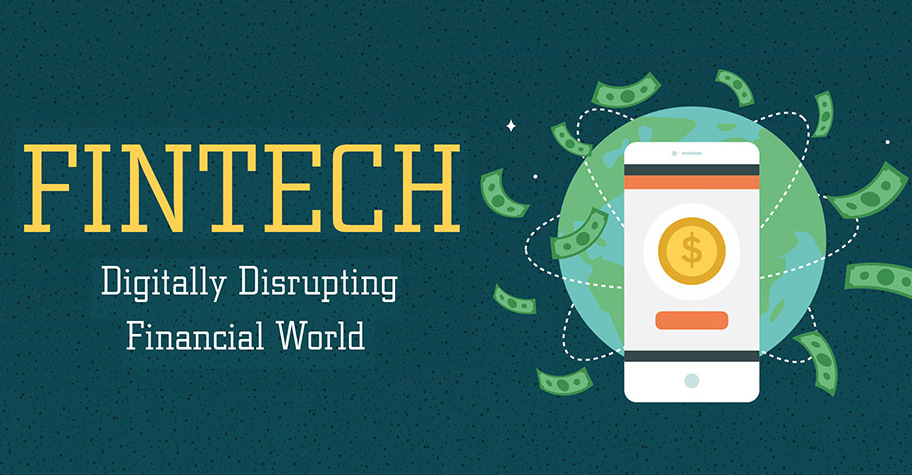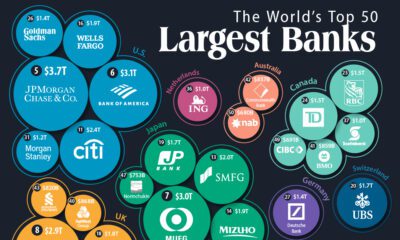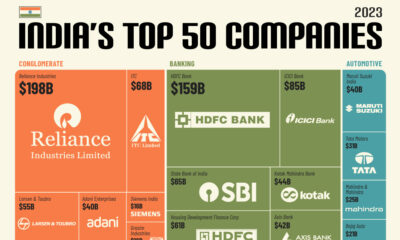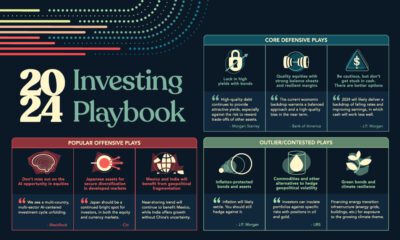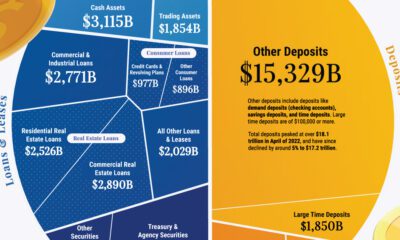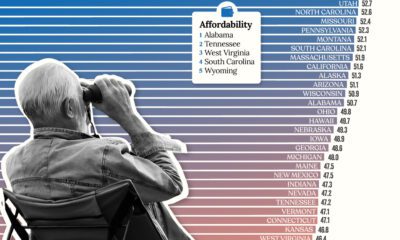Technology
How Fintech is Digitally Disrupting the Financial World
The market for fintech, or financial technology software, was one of the hottest sectors in 2015.
The time is ripe for financial innovation: new technologies are helping end users skip past gatekeepers and intermediaries to customize their use of financial products. Meanwhile, many of the same technologies are also erasing the inefficiencies of banks and other financial institutions to cut costs in ways the industry never deemed possible. Lastly, innovations such as the blockchain are changing the way banks approach their most basic mechanisms – as a result, even the most fundamental practices in banking are evolving.
Payments, personal finance, P2P lending, insurance, digital banking, equity crowdfunding, smart contracts, and digital currencies are just some of the areas that are of interest in the fintech landscape.
Financial Innovation via Technology
There’s heavy competition in the fintech space and no shortage of moving parts. However, this infographic from DealSunny helps to put most things in perspective.
(Note: we did notice a lack of information on blockchain tech here, but otherwise it is a good introduction.)

How will incumbents in the financial realm react to the fintech revolution? That is one of the more interesting questions that is arising now.
Close to a year ago, it was clear that many financial executives were unaware of key fintech startups. However, this appears to be changing fast as fintech companies pose more of a threat.
Incumbents have two options: (1) they can compete by developing proprietary technology or working closely with fintech startups that know what they are doing, and (2) they can buy the fintech companies that are leading the race to scale.
We are already seeing companies like Visa and Mastercard diving head first into the P2P payments business. The infrastructure they are using is clearXchange, a network jointly developed by Bank of America, Capital One, JPMorgan Chase, US Bank, and Wells Fargo. As another example, the big banks are also trying to fight robo-advisors by boosting their online wealth management offerings.
However, if fintech companies end up eating the lunch of staid financial institutions – these incumbents will be forced to pay a heavy price. A robo-advisor like Wealthfront already has $2 billion of assets under management, and it won’t be long before the acquisition cost of such a company could literally break the bank.
Technology
All of the Grants Given by the U.S. CHIPS Act
Intel, TSMC, and more have received billions in subsidies from the U.S. CHIPS Act in 2024.

All of the Grants Given by the U.S. CHIPS Act
This was originally posted on our Voronoi app. Download the app for free on iOS or Android and discover incredible data-driven charts from a variety of trusted sources.
This visualization shows which companies are receiving grants from the U.S. CHIPS Act, as of April 25, 2024. The CHIPS Act is a federal statute signed into law by President Joe Biden that authorizes $280 billion in new funding to boost domestic research and manufacturing of semiconductors.
The grant amounts visualized in this graphic are intended to accelerate the production of semiconductor fabrication plants (fabs) across the United States.
Data and Company Highlights
The figures we used to create this graphic were collected from a variety of public news sources. The Semiconductor Industry Association (SIA) also maintains a tracker for CHIPS Act recipients, though at the time of writing it does not have the latest details for Micron.
| Company | Federal Grant Amount | Anticipated Investment From Company |
|---|---|---|
| 🇺🇸 Intel | $8,500,000,000 | $100,000,000,000 |
| 🇹🇼 TSMC | $6,600,000,000 | $65,000,000,000 |
| 🇰🇷 Samsung | $6,400,000,000 | $45,000,000,000 |
| 🇺🇸 Micron | $6,100,000,000 | $50,000,000,000 |
| 🇺🇸 GlobalFoundries | $1,500,000,000 | $12,000,000,000 |
| 🇺🇸 Microchip | $162,000,000 | N/A |
| 🇬🇧 BAE Systems | $35,000,000 | N/A |
BAE Systems was not included in the graphic due to size limitations
Intel’s Massive Plans
Intel is receiving the largest share of the pie, with $8.5 billion in grants (plus an additional $11 billion in government loans). This grant accounts for 22% of the CHIPS Act’s total subsidies for chip production.
From Intel’s side, the company is expected to invest $100 billion to construct new fabs in Arizona and Ohio, while modernizing and/or expanding existing fabs in Oregon and New Mexico. Intel could also claim another $25 billion in credits through the U.S. Treasury Department’s Investment Tax Credit.
TSMC Expands its U.S. Presence
TSMC, the world’s largest semiconductor foundry company, is receiving a hefty $6.6 billion to construct a new chip plant with three fabs in Arizona. The Taiwanese chipmaker is expected to invest $65 billion into the project.
The plant’s first fab will be up and running in the first half of 2025, leveraging 4 nm (nanometer) technology. According to TrendForce, the other fabs will produce chips on more advanced 3 nm and 2 nm processes.
The Latest Grant Goes to Micron
Micron, the only U.S.-based manufacturer of memory chips, is set to receive $6.1 billion in grants to support its plans of investing $50 billion through 2030. This investment will be used to construct new fabs in Idaho and New York.
-

 Debt1 week ago
Debt1 week agoHow Debt-to-GDP Ratios Have Changed Since 2000
-

 Markets2 weeks ago
Markets2 weeks agoRanked: The World’s Top Flight Routes, by Revenue
-

 Countries2 weeks ago
Countries2 weeks agoPopulation Projections: The World’s 6 Largest Countries in 2075
-

 Markets2 weeks ago
Markets2 weeks agoThe Top 10 States by Real GDP Growth in 2023
-

 Demographics2 weeks ago
Demographics2 weeks agoThe Smallest Gender Wage Gaps in OECD Countries
-

 United States2 weeks ago
United States2 weeks agoWhere U.S. Inflation Hit the Hardest in March 2024
-

 Green2 weeks ago
Green2 weeks agoTop Countries By Forest Growth Since 2001
-

 United States2 weeks ago
United States2 weeks agoRanked: The Largest U.S. Corporations by Number of Employees

